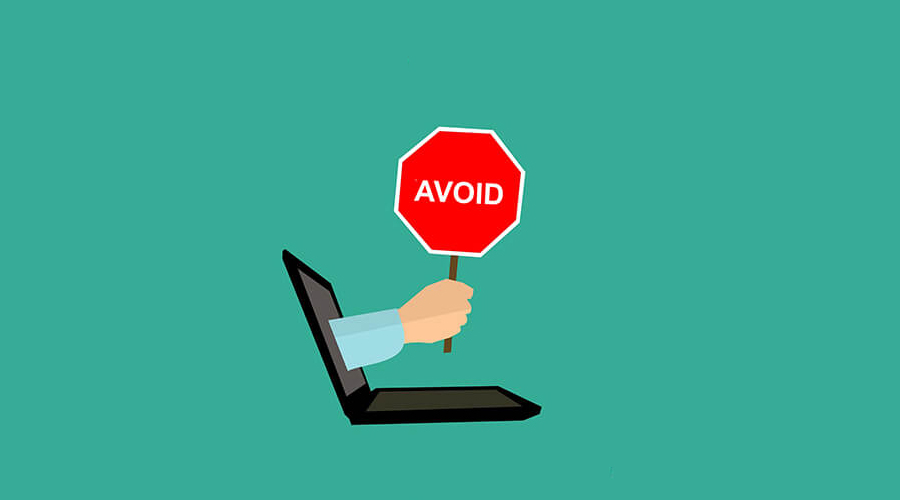Lasix is a diuretic that is used to treat a variety of medical conditions, including hypertension, edema, and heart failure. It is also commonly used to prevent or reduce the risk of developing kidney stones. Lasix is safe and effective for most people who take it, but there are some potential side effects that you should be aware of before starting Lasix therapy. In this blog post, we will discuss the truth about Lasix: what it is, how it works, stanozolol benefits and what you need to know before training and why strong muscles taking it.
What is Lasix?
Lasix is a medication that belongs to a class of drugs called diuretics. Diuretics (water pill) are medications that help to promote urine production and excretion. Lasix works by inhibiting the reabsorption of salt and water in the kidney, which leads to an increase in urine output.
Lasix works by increasing the amount of urine that your body produces. This increased urine output helps to remove excess fluid from your body, which can reduce swelling and bloating. Additionally, increased urination helps to flush out toxins and waste products from your body.

Lasix is a safe and effective medication for most people who take it, but some people should not take Lasix. Lasix can cause electrolyte abnormalities, so it is important to monitor your electrolytes while taking Lasix. Lasix should not be taken by people with liver disease, kidney disease, or congestive heart failure. It is also important to avoid Lasix if you are pregnant or breastfeeding. Lasix passes into breast milk and may harm a nursing baby. Lasix may also slow breast milk production.
If you are unsure whether Lasix is the right medication for you, speak to your doctor. Your doctor can help you determine whether Lasix is the right medication for your individual needs.
What to avoid?
When taking Lasix, there are some things that you should avoid. First and foremost, you should avoid becoming dehydrated. Make sure to drink plenty of fluids while taking Lasix, and if you become dehydrated, discontinue the medication and seek medical attention.

You should also avoid using Lasix if you are pregnant or breastfeeding. Additionally, you should avoid taking Lasix if you have liver or kidney disease, or if you are allergic to sulfa drugs.
Lasix is a safe and effective medication for most people who take it. However, there are some potential side effects that you should be aware of before starting Lasix therapy. Make sure to drink plenty of fluids while taking Lasix, and if you become dehydrated, discontinue the medication and seek medical attention. If you are pregnant or breastfeeding, you should avoid taking Lasix. Additionally, if you have liver or kidney disease, or if you are allergic to sulfa drugs, Lasix may not be right for you. Talk to your doctor about whether Lasix is right for you.
How should I take Lasix?
Lasix is typically taken orally, either as a tablet or an oral solution. Lasix can also be given intravenously. The average dose of Lasix ranges from 20-to 80 mg per day.
When taking Lasix, you should take it with plenty of fluids to avoid dehydration. Additionally, you should take Lasix at least two hours before or four hours after taking other medications.

Before taking Lasix, you should be aware of the potential side effects of the medication. Lasix can cause increased urination, thirst, and dehydration. Other common side effects include lightheadedness, dizziness, and headache. Serious side effects of Lasix are rare but can include low blood pressure, kidney or liver disease, and difficulty breathing. If you experience any serious side effects while taking Lasix, discontinue the medication and seek medical attention immediately. You should also talk to your doctor about all of the medications that you are taking to avoid any potential interactions. Lasix should not be used during pregnancy or breastfeeding. If you become pregnant while taking Lasix, discontinue the medication and seek medical attention immediately.
Dosage Lasix
The dosage of Lasix depends on the severity of the condition being treated. For most people, the recommended starting dose is 20-80 mg per day.
If you are being treated for hypertension, the recommended starting dose is 40 mg twice daily. If you are being treated for edema, the recommended starting dose is 20-80 mg once daily.

It is important to take Lasix as directed by your doctor. Do not take more or less Lasix than prescribed by your doctor. If you miss a dose of Lasix, take the missed dose as soon as possible. If it is almost time for your next dose, skip the missed dose and continue with your regular dosing schedule. Do not take two doses of Lasix at the same time.
If you overdose on Lasix, seek medical attention immediately. Symptoms of a Lasix overdose include dehydration, hypotension, tachycardia, and electrolyte abnormalities.
Common side effects of Lasix
The most common side effects of Lasix include increased urination, thirst, muscle cramps, and dehydration. Other common side effects include lightheadedness, dizziness, and headache.

If you experience any of these side effects, it is important to seek medical attention immediately. These side effects can be serious and may require discontinuation of the medication.
Less common side effects of Lasix include gastrointestinal problems such as nausea and vomiting. Additionally, some people may experience an allergic reaction to Lasix including rash, hives, and difficulty breathing. If you experience any of these symptoms, seek medical attention immediately.
Other side effects and adverse effects of this medicine include Gut (gastrointestinal or GI) reactions like pancreatitis, jaundice, anorexia, cramping, diarrhea, constipation, upper stomach pain, nausea, and vomiting. Systemic hypersensitivity reactions: like severe anaphylactic shock, necrotizing angiitis, and interstitial nephritis
Serious side effects of Lasix
Serious side effects of Lasix are rare, it is important to be aware of the potential risks and warnings associated with the medication. If you experience any serious side effects, discontinue the medication and seek medical attention immediately.
There are some risks and warnings associated with Lasix that you should be aware of before starting the medication. Lasix can cause low blood pressure, which can lead to unusual bleeding, dizziness, and lightheadedness. Additionally, Lasix can interact with other medications, so it is important to tell your doctor about all of the medications that you are taking.

Lasix can also be dangerous for people with kidney or liver disease, so it is important to talk to your doctor if you have these conditions.
Finally, Lasix should not be used during pregnancy or breastfeeding. If you become pregnant while taking Lasix, discontinue the medication and seek medical attention immediately.
Long-term use of Lasix can cause dehydration, electrolyte imbalances, and kidney damage. If you experience any of these side effects, discontinue Lasix and seek medical attention. Be sure to call your doctor about all medical conditions and medications that you are taking before starting Lasix. Additionally, Lasix can interact with other medications.
How long do Lasix side effects last?
For most people, Lasix side effects are mild and go away within a few days. However, some people may experience more serious side effects that require the discontinuation of the medication. If you experience any serious side effects, seek medical attention immediately.

If you experience any serious side effects while taking Lasix, it is important to discontinue the medication and seek medical attention immediately. Lasix can be dangerous for people with kidney or liver disease, so it is important to talk to your doctor if you have these conditions. Additionally, Lasix should not be used during pregnancy or breastfeeding. If you become pregnant while taking Lasix, discontinue the medication and seek medical attention immediately.
What happens if I miss a dose?
If you miss a dose of Lasix, take the missed dose as soon as you remember. If it is almost time for your next dose, skip the missed dose and continue on your regular dosing schedule. Do not take two doses of Lasix at the same time.

Additionally, if you are taking Lasix for hypertension, it is important to take the medication at the same time each day to maintain consistent blood pressure levels.
Lasix should be stored at room temperature in a cool, dry place. Keep Lasix out of reach of children and pets.
What happens if I overdose?
If you overdose on Lasix, seek medical attention immediately. Symptoms of an overdose include dizziness, lightheadedness, fainting, and dehydration.

Lasix is a medication used to treat hypertension and edema. The dosage of Lasix depends on the severity of the condition being treated. For most people, the recommended starting dose is 20-80 mg per day. Common side effects of Lasix include increased urination, thirst, and dehydration. Other common side effects include lightheadedness, dizziness, and headache. Serious side effects of Lasix are rare but can include low blood pressure, kidney or liver disease, and difficulty breathing. If you experience any serious side effects while taking Lasix, discontinue the medication and seek medical attention immediately.
How to avoid Lasix side effects?

There are some things that you can do to avoid Lasix side effects. Be sure to drink plenty of fluids when taking Lasix to avoid dehydration. Additionally, take Lasix at least two hours before or four hours after taking other medications. Finally, talk to your doctor about all of the medications that you are taking to avoid any potential interactions.
Take Lasix as directed

Take Lasix as directed by your doctor. Be sure to drink plenty of fluids when taking Lasix to avoid dehydration. Additionally, take Lasix at least two hours before or four hours after taking other medications. Finally, talk to your doctor about all of the medications that you are taking to avoid any potential interactions.
Avoid taking a late dose

Avoid taking a late dose of Lasix. If you miss a dose of Lasix, take the missed dose as soon as you remember. If it is almost time for your next dose, skip the missed dose and continue on your regular dosing schedule. Do not take two doses of Lasix at the same time.
Avoid some common over-the-counter drugs
Some common over-the-counter drugs can interact with Lasix. These include nonsteroidal anti-inflammatory drugs (NSAIDs), some antacids, and some vitamins and minerals. Be sure to talk to your doctor about all of the medications that you are taking to avoid any potential interactions.

If you experience any serious side effects while taking Lasix, it is important to discontinue the medication and seek medical attention immediately. Some serious side effects include low blood pressure, which can lead to dizziness and lightheadedness, and kidney or liver disease. Additionally, Lasix should not be used during pregnancy or breastfeeding. If you become pregnant while taking Lasix, discontinue the medication and seek medical immediately.
Watch for signs of dehydration or electrolyte imbalance
Be sure to drink plenty of fluids when taking Lasix, as it can lead to dehydration. Signs of dehydration or electrolyte imbalance include dizziness, lightheadedness, fainting, and dry mouth. If you experience any of these symptoms, seek medical attention immediately.

Lasix is a medication used to treat high blood pressure and fluid retention. It is important to take Lasix as directed by your doctor to avoid any potential side effects. Some common side effects include dehydration, low blood pressure, and kidney or liver disease. Additionally, Lasix should not be used during pregnancy or breastfeeding. If you become pregnant while taking Lasix, discontinue the medication and seek medical attention immediately.
Plan your activities around the dosing schedule
Lasix is a medication that is taken orally. It is important to plan your activities around the dosing schedule to avoid any potential side effects. Lasix should be taken at least two hours before or four hours after taking other medications. Additionally, it is important to drink plenty of fluids when taking Lasix to avoid dehydration. Finally, be sure to talk to your doctor about all of the medications that you are taking to avoid any potential interactions.

If you have any questions about Lasix, be sure to ask your doctor. They will be able to provide you with more information and answer any questions that you may have.
Keep all follow-up appointments and frequently monitor self at home

If you have been prescribed Lasix, be sure to keep all follow-up appointments with your doctor. Additionally, it is important to frequently monitor yourself at home for any potential side effects. Some common side effects include dehydration, low blood pressure, and kidney or liver disease. If you experience any of these side effects, seek medical attention immediately.
Tell the doctor about all medical conditions and medications

Before taking Lasix, be sure to tell your doctor about all medical conditions that you have. Additionally, it is important to tell the doctor about all medications that you are currently taking. This includes over-the-counter medications, vitamins, and supplements. Lasix may interact with some medications, so it is important to ask your doctor if there are any potential interactions.
What other drugs will affect Lasix?

Lasix can interact with other medications. Be sure to tell your doctor about all medications and prescription drugs that you are taking to avoid any potential drug interactions. Additionally, some common over-the-counter drugs can interact with Lasix. These include NSAIDs, some antacids, blood pressure medications, and some vitamins and minerals.
Finding
Lasix is a medication that is used to treat a variety of medical conditions. It works by increasing urine output and helps to remove excess fluid from your body. While Lasix is generally safe and effective, there are some potential side effects that you should be aware of. If you experience any of these side effects, discontinue Lasix and seek medical attention.
If you are prescribed Lasix, be sure to take it as directed by your doctor. This includes following the dosing schedule and drinking plenty of fluids. Additionally, be sure to tell your doctor about all medical conditions and medications that you are taking. Lasix can interact with other medications, so it is important to disclose all information to your doctor. Finally, if you experience any side effects while taking Lasix, discontinue use and seek medical attention.
Thank you for reading! We hope this blog post has helped learn more about Lasix. Remember to always consult with your doctor and any healthcare professional and follow what is prescribed. Lasix can be dangerous if not being properly taken. Always follow the right dosage, and learn more about this drug! Stay tuned for more posts like this in the future!
FAQ
What does Lasix do to the body?
Lasix is a medication that is used to treat a variety of medical conditions. It works by increasing urine output and helps to remove excess fluid from your body. Additionally, Lasix can help to reduce swelling and edema.
Lasix can interact with other medications. Be sure to tell your doctor about all medications that you are taking to avoid any potential interactions. Additionally, some common over-the-counter drugs can interact with Lasix. These include NSAIDs, some antacids, and some vitamins and minerals.
Is Lasix hard on kidneys?
Lasix can be hard on the kidneys. If you have kidney disease, Lasix may make your condition worse. Additionally, Lasix can interact with other medications that are used to treat kidney disease. Be sure to tell your doctor about all medical conditions and medications that you are taking before starting Lasix.
If you experience any side effects while taking Lasix, discontinue use and seek medical attention.
You should avoid drinking alcohol while taking Lasix. Additionally, you should avoid becoming dehydrated while taking Lasix. Be sure to drink plenty of fluids and follow the dosing schedule prescribed by your doctor. Finally, avoid driving or operating heavy machinery until you know how Lasix will affect you.
Should you drink a lot of water when taking Lasix?
Yes, you should drink plenty of fluids while taking Lasix. This will help to prevent dehydration and will also help Lasix to work more effectively. Be sure to follow the dosing schedule prescribed by your doctor and drink plenty of fluids throughout the day.
Lasix works by increasing urine output. This can cause you to urinate more frequently. Additionally, Lasix can also cause dehydration. Be sure to drink plenty of fluids and follow the dosing schedule prescribed by your doctor to avoid dehydration.
Who should not take Lasix?
Lasix is not recommended for people with kidney disease. Additionally, Lasix can interact with other medications that are used to treat kidney disease. Be sure to tell your doctor about all medical conditions and medications that you are taking before starting Lasix.
If you experience any side effects while taking Lasix, discontinue use and seek medical attention.
What are the most common side effects of Lasix?
Some potential side effects of Lasix include dehydration, low blood pressure, dizziness, and headaches. If you experience any of these side effects, stop taking Lasix and seek medical attention. Additionally, Lasix can interact with other medications. Be sure to tell your doctor about all medications that you are taking to avoid any potential interactions.
Seek medical attention immediately if you experience any of the following side effects:
- shortness of breath
- chest pain
- irregular heartbeat
- swelling of the ankles or feet
- fainting
These are potentially serious side effects and Lasix should be discontinued immediately. Seek medical attention if you experience any of these side effects.

